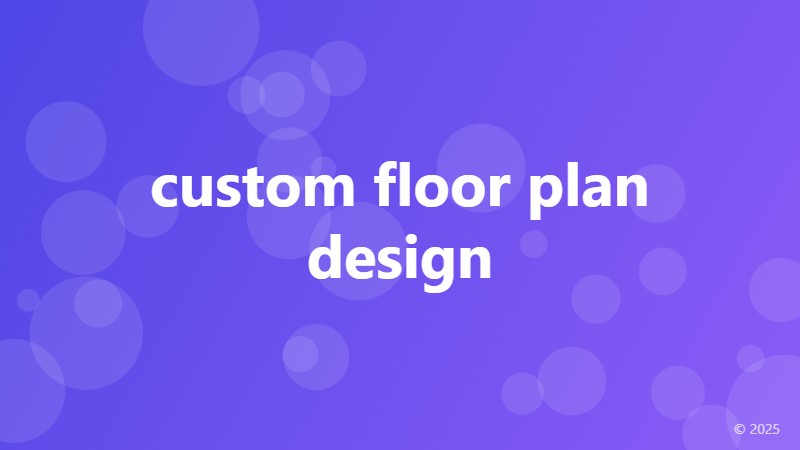custom floor plan design

What is Custom Floor Plan Design?
Custom floor plan design is the process of creating a unique and personalized layout for a building or a home. It involves working closely with architects, designers, and engineers to create a design that meets the specific needs and requirements of the client. Unlike pre-designed floor plans, custom floor plan design offers the flexibility to incorporate specific features, layouts, and functionalities that are tailored to the client's lifestyle and preferences.
Benefits of Custom Floor Plan Design
One of the primary benefits of custom floor plan design is that it allows homeowners to create a living space that is tailored to their specific needs and preferences. With a custom design, homeowners can incorporate features such as natural lighting, energy-efficient systems, and smart home technology to create a living space that is both functional and sustainable. Additionally, custom floor plan design can also increase the value of a property, making it more attractive to potential buyers if the homeowner decides to sell in the future.
How to Create a Custom Floor Plan Design
Creating a custom floor plan design involves several steps, including:
- Defining the project scope and budget
- Conducting a site analysis to identify any site constraints or opportunities
- Developing a conceptual design based on the client's requirements and preferences
- Creating a detailed design and layout, including floor plans, elevations, and cross-sections
- Refining the design through a series of revisions and iterations
- Finalizing the design and preparing construction documents
What to Consider When Creating a Custom Floor Plan Design
When creating a custom floor plan design, there are several factors to consider, including:
- Budget: Custom floor plan design can be a costly process, so it's essential to establish a realistic budget and stick to it.
- Site constraints: The design should take into account any site constraints, such as zoning regulations, environmental factors, and existing infrastructure.
- Lifestyle: The design should be tailored to the client's lifestyle and preferences, including their daily routines, hobbies, and interests.
- Sustainability: The design should incorporate sustainable features and materials to minimize the building's environmental impact.
Conclusion
Custom floor plan design offers homeowners the opportunity to create a unique and personalized living space that meets their specific needs and preferences. By working closely with architects, designers, and engineers, homeowners can create a design that is both functional and sustainable. Whether you're building a new home or renovating an existing one, custom floor plan design is an excellent way to create a living space that reflects your personality and lifestyle.